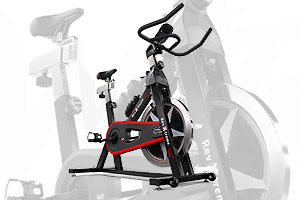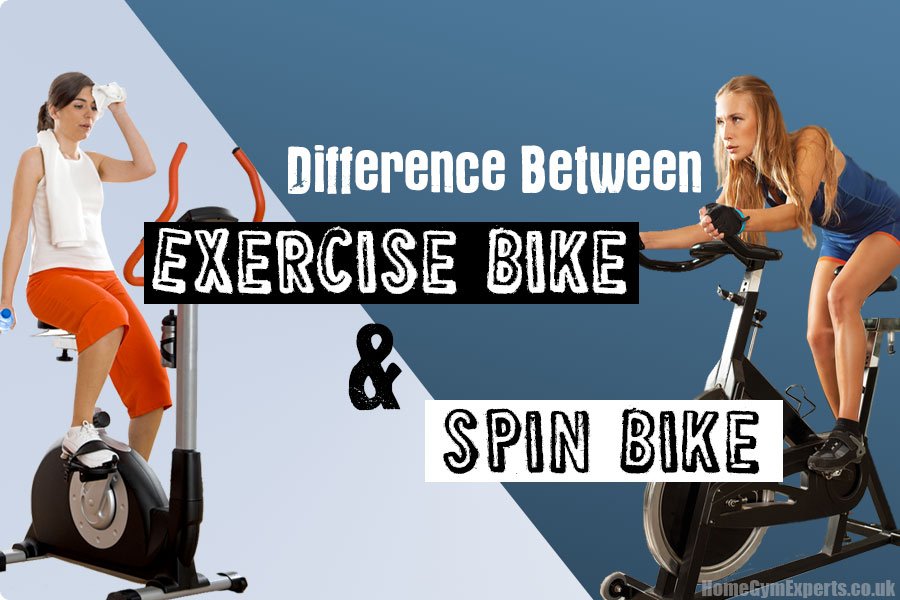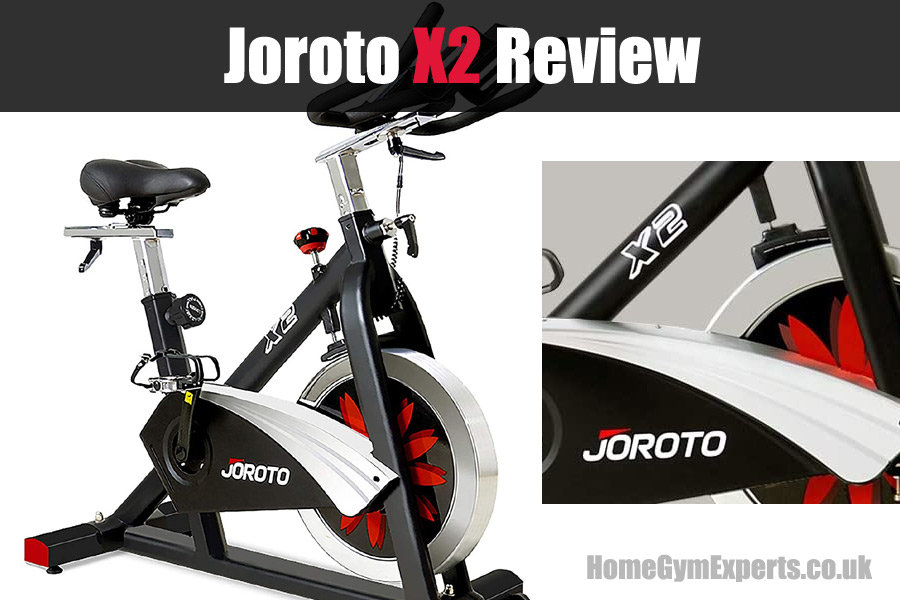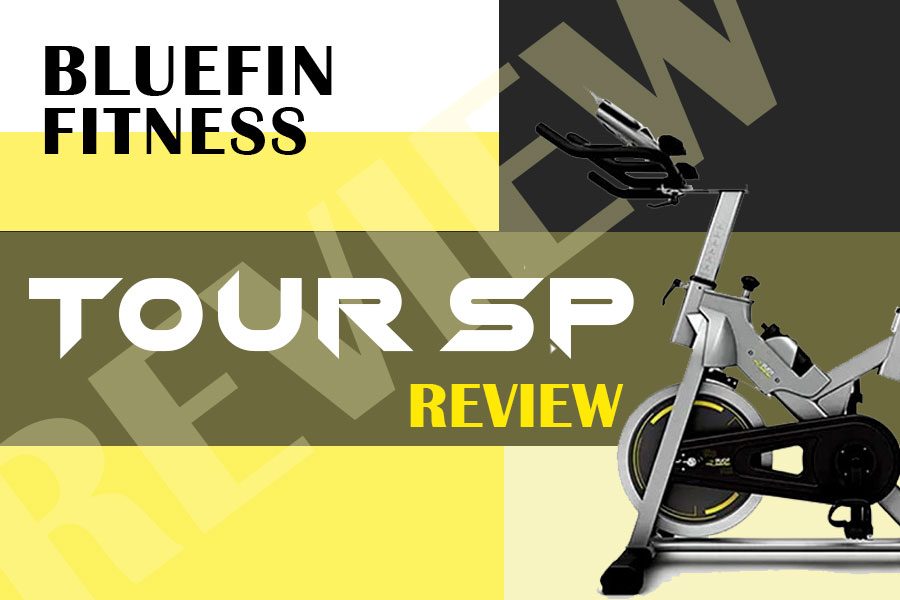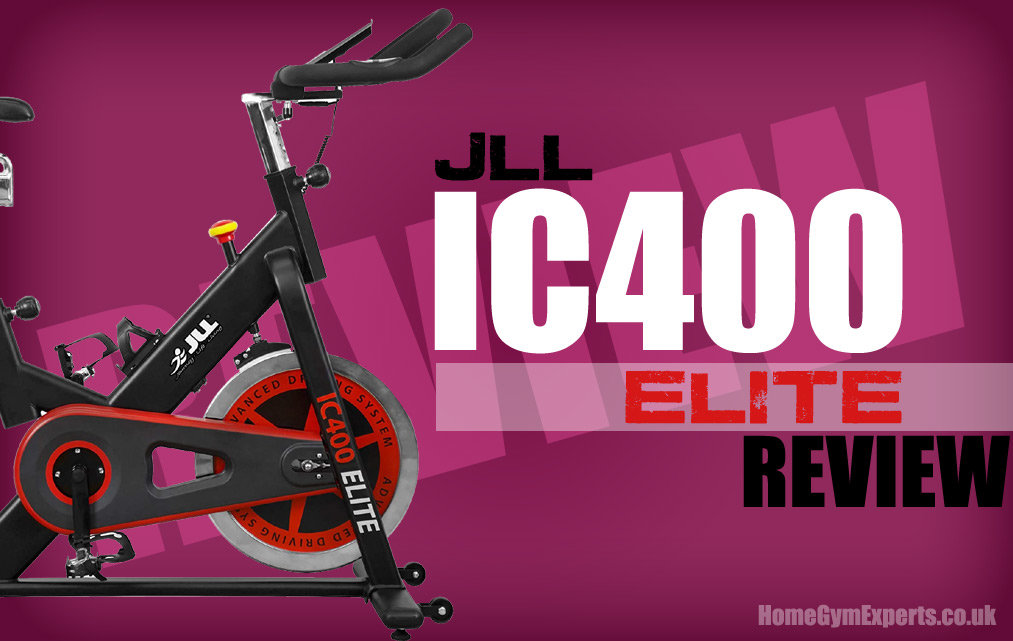Spin until your heart’s content
Spin bikes are a fantastic way to burn calories at home (up to 500 per hour) and research has shown this high-intensity exercise is ideal for losing weight, building muscle and getting in shape. Best of all, spinning at home can do all this in a surprisingly short amount of time.
This guide will help you pick the best bike… and avoid the pitfalls
There’s a wealth of spin bikes out there to buy for home use – some good, some bad and a few that are definitely ugly. Indoor cycles are, after all, fairly complicated pieces of machinery. There’s a lot of moving parts and different options to trip up the unsuspecting buyer. Understanding exactly what you’re buying and what everything does, is really important.
Take a breather! This quick-start guide has your back.
We’ll cover everything you’ll need to confidently choose a spin bike in 2025. By the end of this guide, you’ll know how to pick a bike that’s just right for your home or home gym. We’ll arm you with everything you need to know before taking the leap and hitting ‘buy’.
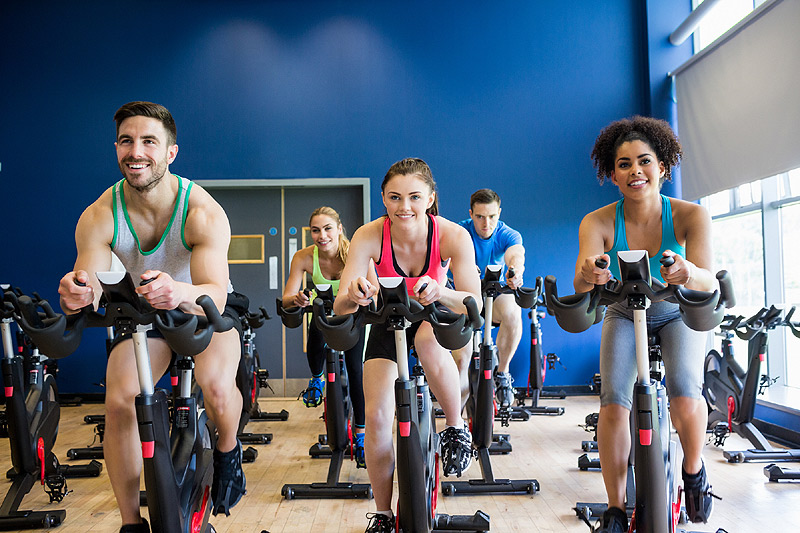
What’s the most important 3 things you should find out about your new spin bike?
Your spin bike needs to be able to provide you with enough resistance for whatever level you’re at and beyond.
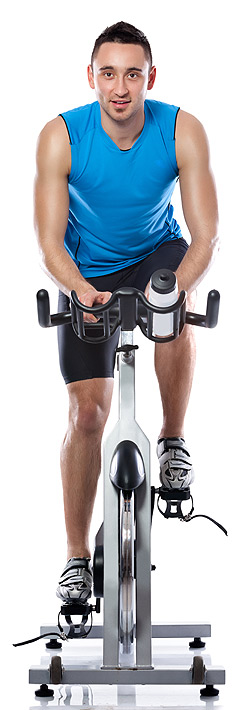 How stable is it?
How stable is it?
As with any bit of gym gear we get to review or test here on Home Gym Experts, one of the main things we harp on about is stability.
Those spin bikes all look fantastic in those product photos, but they can crumble under the spot light. Well, not literally. But creaking, wobbling and lateral shifting are all hall marks of a cheap, unstable spin bike. (See our best budget spin bikes guide for some solid affordable bikes).
If you’re a light weight then this is going to impact you less. Anyone of a larger height and weight is going to have to scrutinize how stable the spin bike is more carefully.
Has it got enough ooophm to it?
Not the most technical way to put it but some spin bikes have an extremely low resistance, either down to the fly wheel or poor implementation of the brake system.
Normally an issue at the cheaper end of the spectrum. But your spin bike needs to be able to provide you with enough resistance for whatever level you’re at and beyond.
And there’s the key. If you’re a regular gym goer, used to taking on the most formidable of spin classes, you’re going to need something with some serious power. A chunky 24kg flywheel. If you’re just looking to lose some weight at home and are starting out spinning, then you can get away with far less.
But bear in mind you’ll get better, stronger and faster. And will need ‘room to grow’ with your machine too.
The right price
Spin bike breakdown
Each spin bike we’ve seen rarely breaks the mold. Generally speaking they look the same and all have the same ‘bits’. Where they differ is in the quality and execution of each component. Let’s take a look at the main parts of the spin bike and then drill down into specifics and things you need to look out for.
Meet your new spin bike
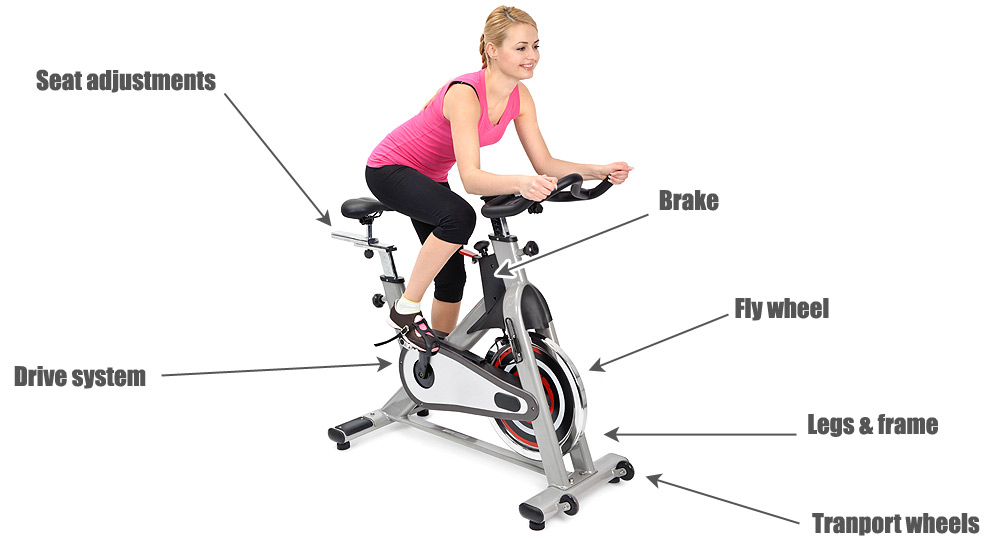
The flywheel
The flywheel is the part of a spin bike that everyone notices first. It’s the large, elevated wheel at the front of the bike and it’s the part which provides all of the benefits of the actual work out.
The most important thing when considering a flywheel is it’s weight.

In general, the heavier the flywheel, the better. A heavier flywheel means smoother motion and better performance all round. Commercial spin bikes might have a flywheel that’s 50lbs (23kg), or heavier.
Home bike systems might have a lower weight flywheel but generally hover at around the 40lb mark. If possible, avoid spin bikes with flywheels of lower than 35lb (16kg) weight. These will either be cheaply made models, or the lack of weight could cause stuttering while in use.
The resistance
Resistance is what’s fighting against you while you’re sweating away on top of the bike. There are three types of resistance. Cables, Manual Screws and Magnetic.
Cable resistance is old fashioned and not really recommended. As it’s literally just a cable around the flywheel, it’s liable to slip, especially on high resistance levels or as the bike gets older. Not only does this mean less effective sessions, it also tends to make horrible noises, especially at high speed.
Manual screw resistance provides direct resistance against the flywheel, like a gearing system. They’re a mid range product with no real advantages or disadvantages.

Magnetic resistance is new and expensive. However, it’s by far the most effective method, because it’s completely silent, with the most amount of variation. Plus, because it doesn’t put physical strain on the flywheel itself, it won’t wear the bike out anywhere near as much, saving you money in the long run.
Our recommendation: Avoid cable resistance and if possible, buy magnetic.
The drive system
A drive system is what connects the pedals to the flywheel, in the same way a bicycle chain connects the wheels to the pedal. There are two options. Chain and belt.
If possible, always go for belt driven spin bikes. Chains require a lot more maintenance, are harder to change and they’re annoyingly loud, especially at high speeds. The difference in price is minor, so if you have a choice, always pick a belt.
The legs and frame
Considering the weight of the flywheel and rider, a spin bike’s frame goes through a lot of stress.
Almost all spin bikes will have a solid, heavy duty frame that’s capable of standing up to solid punishment. Where you should be focusing is the legs.
Smaller, cheaper spin bikes tend to have narrower legs. This is bad. Again, there’s a lot of weight and force being thrown around on a spin bike, especially when you’re pedaling at high speed/high resistance.
A wide base will ensure that, no matter what, you’re working on a stable system that’s not going to tip or fall, no matter how hard you go.
Make me work harder: The brake pad
Along with the flywheel, spin bikes also have another way to increase the workout’s difficulty: the brake! This is the dial you’ll find withing reach, towards the upper front of the frame. Twisting this will increase or decrease how hard you’ll have to pedal.
There are three options for brake pad material on spin bikes. Fabric, leather and magnets.
What kind of brake is best on a spin bike?
Fabric brakes are cheap but can burn out fast. As such, they’re normally found only on the cheapest bikes. Leather is the standard and provides a decent balance between toughness and cost.
Magnets are the gold standard. There’s no brake wear, because there’s no contact between the magnet and the wheel and you don’t even hear a sound, because again, the brakes aren’t actually touching the wheels. Plus, magnetic brakes have a completely smooth action, allowing you to brake at the exact force you want, every single time. But they are much more expensive than the other options.
Maintaining the brake pads (if you go for that type) is quick and easy. Here’s a quick video on how to do it:
The adjust-ability
Spin sessions can last a while and part of being able to make it through is having a comfortable riding position.
Bikes normally offer two different areas of adjustability. The seat and the handlebars. Most bikes will have options that encompass average heights and weights.
It’s worth paying close attention to how adjustable a bike is if you’re particularly tall or short, or if you’re overweight. And about that…
The Weight Limit
Not all bikes can take all weights. While most spin bikes are capable of taking a decent amount of weight (a general rule of thumb is around 120kg, or 260lbs,) if you’re particularly big or heavy it’s definitely worth making sure that the bike you’re choosing can hold your weight.
Remember, spin bikes come under a lot of force when they’re in use, so buying something that can comfortably hold you is important.
The computer
Pretty much every single spin bike will have an onboard computer and a display screen, giving you details about your session. The basics might include time, speed, distance and total calories burned.
More advanced bikes will have more advanced computers and might also track the resistance changes, your heart rate and more.
The connectivity
Some newer bikes might actually have the option to connect their computer to your phone or other fitness device.
This is awesome if you’re into that. The most common method used is Bluetooth, but some also offer cables so you can charge your devices as you work out.
This lets you track your workouts directly on your devices, usually through an app, as well as listen to your own music whilst you’re working hard.
The pedals
Pedals aren’t a major concern. As long as they’re comfortable and your feet fit them, then you should be fine.
The only consideration is if you own specialist cycling shoes that have an SPD cleat. If that’s the case, you can purchase pedals that lock in place. But these are normally also available as an aftermarket purchase, so we wouldn’t worry too much.
Bottle holders: An easy thing to get horribly wrong
Cycling at any kind of intensity is thirsty work. Professional cyclists take hydration very seriously, and so should you. It’s bewildering to find the number of spin bikes that don’t even have a water bottle holder.
Don’t get a bike that doesn’t have a bottle holder!
And if you can find one that has a double water bottle holder, that’s always a huge plus, if you’re really into your spin cycling. Not having to jump off the bike for a refill is a real time saver.
When you’re spinning, expect to sweat. A lot. Keeping yourself hydrated is important, which is why almost all bikes come with a built-in bottle holder. But the location can change on each bike and some are harder to access than others, so bear that in mind. No one wants to stop halfway through a session just to grab a drink.
More gym guides
- Best Budget Spin Bikes in 2025
- 10 Reasons You Should Be Using A Spin Bike At Home
- Essential Benefits Of Online Spin Classes
- Cross Trainer Vs. Exercise Bike – Which One Is Right For You?
- Top Home Exercise Equipment For Weight Loss
The little wheels on the front can save a lot of effort
Spin bikes are ridiculously heavy, with some models easily weighing more than 60lbs. Factor in the bulk and they’re almost impossible to carry. Which is why most spin bikes have transport wheels.
These let you scoot the bike around your home much easier than you otherwise could. If you need to move your spin bike around between uses, like wheeling it into a spare room, then these are essential. Thankfully, we’ve not seen many that don’t have these.
Bear in mind steps are still an issue, as is deep pile carpet. Plan around this when you’re setting up.
Is indoor cycling really good for you?
There’s a reason that spin classes are getting more popular every year at gyms and health clubs, with spinning currently the number two most popular choice for exercises classes at gyms. (Losing out to Yoga, if you’re wondering!)
As always on HGE, we’re not interested in someone saying “hey, spin cycling is really good for you!” We like the science and the hard facts here. So is this a good form of exercise?
A recent study was the first of its kind into spin cycling. It was unique in that it combined the different health benefits of indoor cycling, where previous studies had looked at one specific effect such as how indoor cycling affected blood pressure.
The study found there was a number of really positive benefits to health including:
- Decreased blood pressure
- Aerobic fitness
- Cholesterol
- Losing weight without losing muscle mass
The study also found that combining working out on a spin bike with working with strength training yielded the best results.
Conclusion
When you’re looking at spin bikes, the most important things to consider are the flywheel weight and resistance methods.
Everything else can be worked around, but a cheap, light flywheel with cable resistance is liable to only disappoint.
Investing a little more money upfront will give you a much more solid, powerful product that will stand the test of time and boost your workouts. Sadly, as with most things in life, the higher priced products are 99 times out of a hundred way better quality too.
Going by recent research, if you’re serious about your health and fitness, it’s certainly worth the investment.
Resources and further reading
- Study into the benefits of spin cycling
- Details on the most popular classes (spoiler – spinning is #2)
- Cycling hydration strategies you need to know – At MapMyRun
- Read more about cycling hydration here
- Health benefits of indoor cycling (spinning!)


